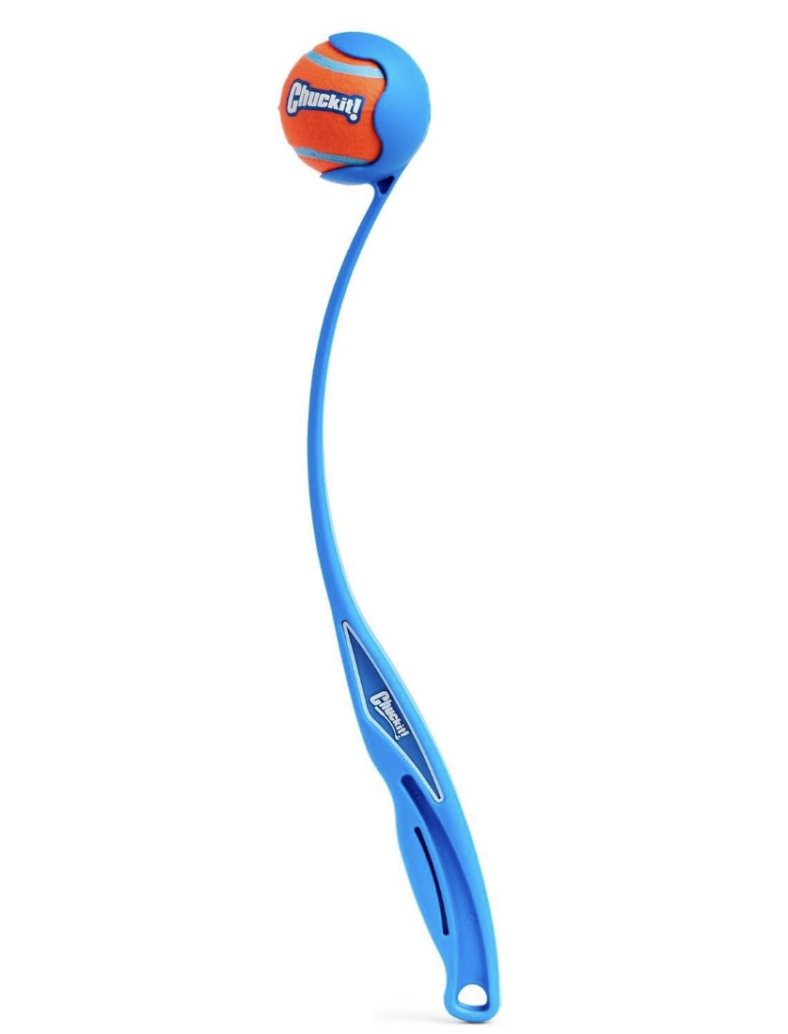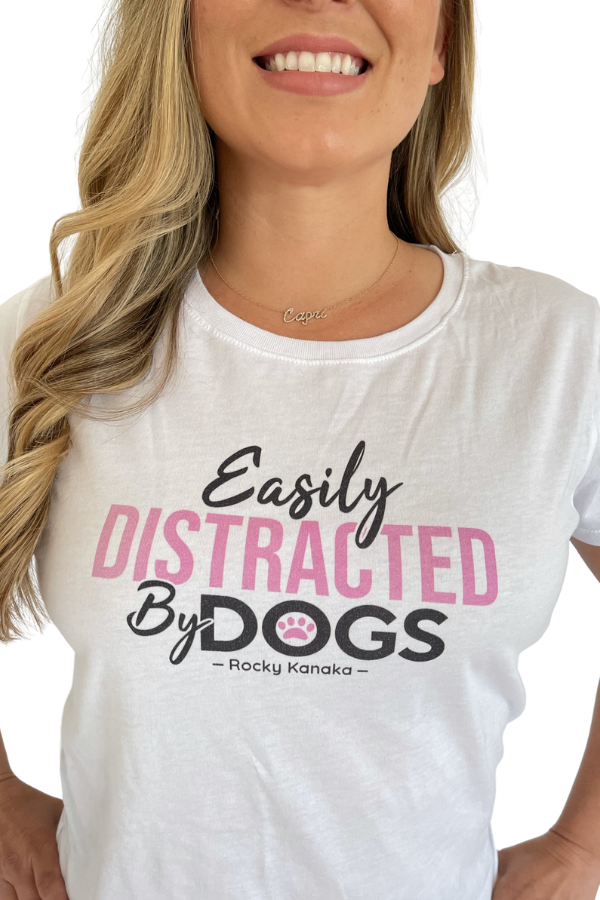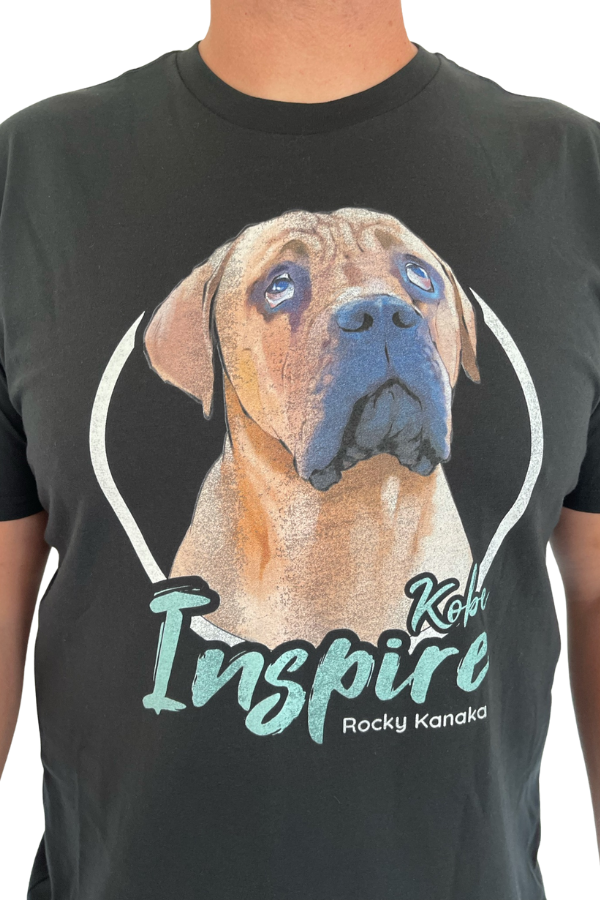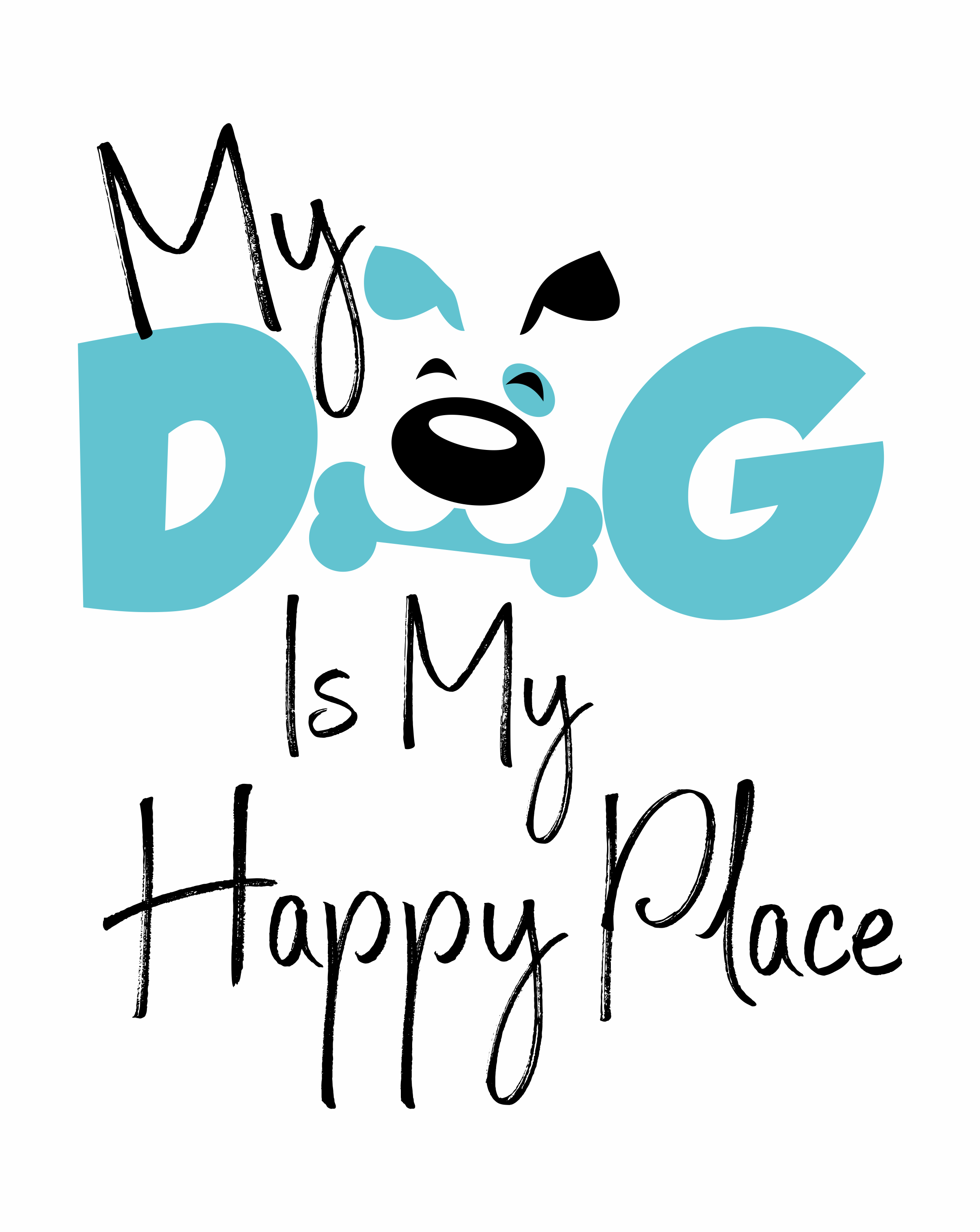Lessons from 3 Blind Dogs: Interview with Rocky Kanaka
Rocky Kanaka is a passionate advocate for pet adoption and a dedicated foster parent who’s opened his home to dogs of all kinds — including those with special needs. Over the years, he’s developed a deep connection with blind dogs, learning firsthand what it takes to support their unique needs. In this interview, Rocky shares valuable insights from living with three blind pups and offers practical tips for anyone caring for a visually impaired dog.

In this interview, we ask Rocky to share some of his wisdom, including:
- Insights from his experience with 3 blind pups
- Tips for making your home a safe space
- Supplies and toys you’ll need and much more
Let’s jump right in…
How is living with a blind dog different from living with a sighted dog?
I have learned that the only real difference between blind and sighted dogs is the types of changes you’ll need to make to your environment and behavior. When you welcome any dog into your home, you do things to set them up for success.
For example, think back to when you were preparing to bring your first dog home. You might have removed toxic plants, or learned (probably the hard way) to stop leaving food on your coffee table.
The process with a blind dog is similar, in that you are looking at your space and arranging it to reduce opportunity for accidents. You might remove fragile objects from side tables, or replace a coffee table with sharp corners with a soft-sided ottoman.
Can we meet the blind dogs you’ve fostered?
1. Garbanzo
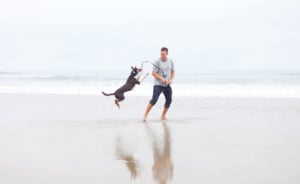
The first blind dog I fostered was Garbanzo
2. Kobe

Then there was Kobe who of course we adopted. So he currently lives with us. He has been such an inspiration that we have created a clothing line called Kobe Inspire.
3. Willie
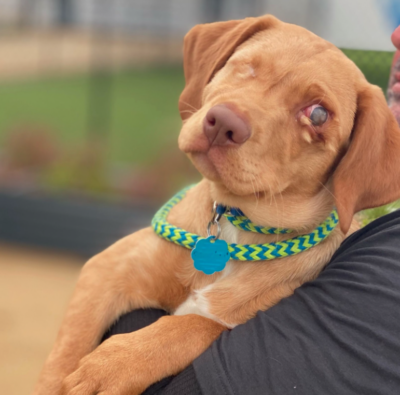
Most recently we fostered Willie. We just found him his forever home so we are really excited about that.
Did anything surprise you about life with a blind dog?
The first 3 months are the hardest. The balance between letting them decompress and learn their new space (which sometimes includes new loss of eyesight) while working to train them to quickly address any issues that could become major problems is A LOT OF WORK. But it’s 100% worth it.
At the end of the day you are not doing it for yourself, you are doing it to give this amazing pet a chance at life.
What did YOU learn from your blind dogs and fosters?
The thing that surprises me the most about life with a blind dog is their ability to adapt and live in the moment. I have never seen a blind dog be sad or complain about their situation. Not that there’s anything wrong with doing that when we feel complex emotions, but I often find myself in awe of how resilient blind dogs are and work to apply that to my life.
Why should a potential adopter consider a blind dog?
We need more people to open their home to special needs dogs. It is very rewarding and most of the time not a lot of extra work.
My blind dog Kobe Kanaka has given me some of the best learning experiences and opportunities for growth I have ever had in my life. The journey of learning how Kobe operates, and getting creative while coming up with ways to make sure his life is just as amazing as a sighted dog is a fun challenge.
What adjustments do you have to make in your house?
Dogs are really great at adapting to their surroundings without sight because it’s not their strongest sense. In fact, I have had hundreds of people message me on Instagram to tell me they didn’t realize their dog was going blind, since they are so adaptable to life without sight!
If you have a senior dog that is going blind, they likely already have your place mapped out through smell, sound, touch, and memory.
You’ll need to make some small changes
If you are introducing a visually-impaired dog to your home, you may discover that there are some small changes you’ll need to make, but it shouldn’t be much more difficult or expensive than prepping for a sighted dog.
For example, my family recently purchased a round table with one centered pedestal versus a table with four legs to help our blind dogs, but we were in the market for a new table anyway!
If you’re not ready to buy new furniture, there are plenty of inexpensive, easy ways you can temporarily “soften” the edges around your home.
I love to use pool noodles, because they are easy to cut to size and you can use double sided removable tape to stick them to wall corners, table corners, etc. either temporarily until your dog has mapped out the home, or permanently if your senior pup is having a bit harder of a time remembering your home layout.
Here’s an example of that trick in action:
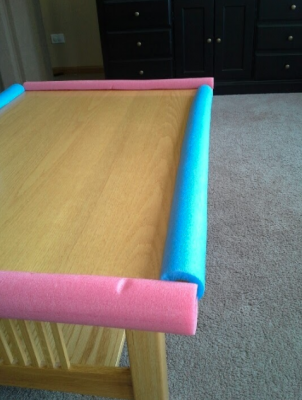
- A good place to start is the room or area of your home where your blind dog spends the most time.
2. Go into that room and think about life from your dog’s perspective. What could they run into that might hurt them or damage the item?
3. Are you able to move that item or add something soft to it?
Over time you will likely be able to remove the pool noodles or return items to their place once your blind dog or blind foster dog has mapped out the area.
This is also a good reminder that you should not move your furniture around! In the same vein, it’s important to remember to always put things back where they belong. Your blind dog will not know you moved things around until they bump into it.
We are not perfect, and we have a toddler, so it can be challenging to make sure all her toys are put away 24/7. That said, we always put away the big bulky items that could hurt Kobe if he were to run into them.
Do I need special equipment to have a blind dog?
You don’t need any special equipment to have a blind dog, but there are some tools that I find very helpful for keeping my blind dogs and fosters safe and happy.
1. Playpen
Having a playpen will help your dog tremendously by establishing a safe place to play, and will help give you the peace of mind so you can get your work done or head out to run an errand without worrying that your pup will wander off. If you have a large dog, purchase a couple and attach them to create a large playpen area.
2. Gate
If you already have a dedicated safe room for your blind pup, a gate will work to keep them safe. Here’s a gate for small dogs, and for large dogs.
- Gate for small dogs:
- Gate for large dogs
3. Crate
I know some people don’t like crating their dogs but your blind dog needs this to know when it’s time to go to bed or take a break.
- Here are the crates I use
- and a cozy crate bed to make your pooch feel extra cozy and safe. The double door is really helpful in case your blind dog gets scared and you need to access the other door to help them out.
How do you let a blind dog know it’s time for bed?
Blind dogs get returned to shelters a lot, and I believe one of the main reasons is because they are not set up for success. One of the most common issues seems to be getting blind dogs to sleep.
Some blind dogs can stay up all night playing and running into things because they simply don’t know it’s dark! Sticking to a schedule and using things like playpens and crates can help set a dog up for success, and condition them to know when it’s time to rest.
Stick to A Consistent Schedule
My most recent foster dog, Willie the Labrador Puppy, was non-stop and didn’t sleep much for the first week.
Once he understood his crate and we got him on a consistent schedule and he knew what to expect, he started appreciating his safespace and slept like a baby through the night and during naps.
Being in the crate let him know that it was time to relax, and that he could let his guard down and take a snooze.
How do blind dogs get around?
Like I said, blind dogs are highly adaptable, and use all their other senses to get around their environment. In addition to touch, sound, and smell, dogs also use their whiskers to navigate the world!
My dog Kobe was born with only half of his heart working, and the optic nerve from his eyes to his brain doesn’t exist, leaving him with zero visibility. However he is also a Cane Corso with some of the biggest dog whiskers I have ever seen.
On multiple occasions I have seen Kobe steer clear of an object at the last second because his whiskers “sensed” the object! In fact I often forget that he is blind with how well he has acclimated to navigating our home.
If your dog isn’t a whisker master like Kobe, you may be able to help them by getting them a Halo. The Halo is the blind dog equivalent to a stick for blind humans, that acts as an alert perimeter device to let them know they are about to run into something. Not all dogs benefit from use of the Halo, but it might be worth a shot if you’ve got a clumsy blind pup.
Can a blind dog navigate around a house unsupervised?
Here is the great news: After some training and a little time for your blind dog to adjust to your home, there isn’t any reason they can’t be in the house unsupervised if it fits them.
I recommend setting boundaries and having safe spaces for your blind (or sighted) dog, and to give them the appropriate resources for their personality and specific needs.
Can you take a blind dog for a walk?
Absolutely! Like sighted dogs, blind dogs like walks too! Remember, blind dogs can do pretty much everything a sighted dog can do. The important thing is to start small with short walks. If you have a backyard, try walking in circles there to help your dog understand how walking on leash works. Leash pressure can be hard for some dogs to learn, so be patient and try, try again!
Can blind dogs play alone in a yard?
As long as your yard is properly fenced, there isn’t any reason your blind dog can’t spend time unsupervised exploring and relaxing in the backyard.
Can a blind dog live in a house with a swimming pool?
Blind dogs can do most anything a dog with sight can do, but there are certain precautions you should take to protect them from possible hazards.
If you have a blind dog, a perimeter around your pool is a must, and you should spend time teaching your blind dog how to swim, and how to exit the pool in case of an emergency.
Supervised, some blind dogs love swimming, so teaching your blind pup could turn into a new hobby!
What are the best toys for blind dogs?
Don’t get your blind dog just any old toy – they need toys that are appropriate for their senses! Here are some of the toys my blind dogs and fosters have loved:
1. Wobble Wag Giggle Ball
Your blind dog will love following this noise making ball around and keep them guessing where it will go next. (check out the video just above to see this toy in action). This is a great toy that dogs love.
2. Starmark Branch
My dog Kobes favorite toy is this durable chew toy shaped like a stick that makes a creaking sound. Bonus: it won’t drive you nuts like a lot of squeaky toys!
3. Scented Toys:
Sounds aren’t the only way to entice a blind dog! Scent is very important, so getting toys that allow your blind dog to find their toy with their nose can be super enriching. My recent blind foster dog Willie loved the Playology Peanut Butter Dog Ring and it’s peanut butter scent!
4. Interactive Toys:
Interactive toys keep your blind dog’s brain active, and their sniffer working overtime! If your dog is new to interactive toys, start easy with this Planet Dog Snoops and Nooks Treat Dispensing toy.
- If your dog enjoys interactive toys, try working your way up to puzzles like this Outward Hound Dog Treat Puzzle.
5. Chuckit! Whistler Ball:
Wondering if it’s possible to play fetch with your blind dog? Just use this ball that makes a sound when you throw it!
- Make sure you get the launcher to save your arm.
Check out my. post where I list out the 9 Best Toys for blind dogs that you can get on Amazon.
Does it matter when/how a dog becomes blind?
I have worked with dogs that were blind from birth, blind dogs who became blind due to old age, and even dogs who have gone blind recently due to illness or accident. Each situation is different and each dog adjusts in its own time.
No matter what, the earlier you can give a blind dog the tools they need to succeed, the better off they will be later in life. The faster you can catch and correct things like food reactivity (common in blind dogs as they feel like they need to protect their food) the more successful they will be in finding a forever home.
Do blind dogs get along with other dogs?
One of the most unexpected challenges of having a blind dog is managing how sighted dogs react to them. While most people are concerned with how their blind dog will react to sighted dogs, it’s often the other way around. Because your dog can’t see, it might not display ‘normal’ body language, which can make other dogs feel uncomfortable or anxious.
For example: It’s perfectly normal for a dog to give a snarl as a warning sign that she is not comfortable with another dog’s approach, or that they are not welcome in their space bubble. Showing a little teeth is okay to say “back off,” but a blind dog can’t see this warning. It’s important you act as your dogs seeing eye person and give them verbal or physical cues to help them navigate meeting new dogs.
There shouldn’t be any reason your blind dog can’t be with other dogs
In my family we use the “sit” command to help blind dogs stop their approach and take a moment to assess their surroundings. It also gives the other dog a chance to adjust to our blind dogs, since a seated posture is non-threatening.
Overall there shouldn’t be any reason your blind dog can’t be with other dogs. They will still say hello with a good butt sniff and will learn how to read the other dog’s movements and body language through touch and sound. Some blind dogs may even follow sighted dogs to help themselves navigate!
Can blind dogs be around small children?
Yes, BUT it really depends on the situation. Of the multiple blind dogs I have worked with, one is a major “NO,” some were a “maybe” depending on the family and environment and, one has been a major “yes.”
It also depends on the size of the dog.
Smaller blind dogs are easier to manage, and less likely to accidentally cause damage. If a small senior dog runs into a small child it isn’t that big of an issue, but a giant blind Great Dane puppy could seriously injure a child.
Remember, even sighted dogs are selective about children, and some are just not the right fit for families with kids. For everyone’s safety, be sure to always supervise children with dogs, regardless of their needs or abilities.
Do you have any words of wisdom for someone considering adopting a blind dog?
Do it! If you have the unique privilege to volunteer with, foster, or adopt a blind dog, it will be one of the best things you do in your life – I guarantee it!















